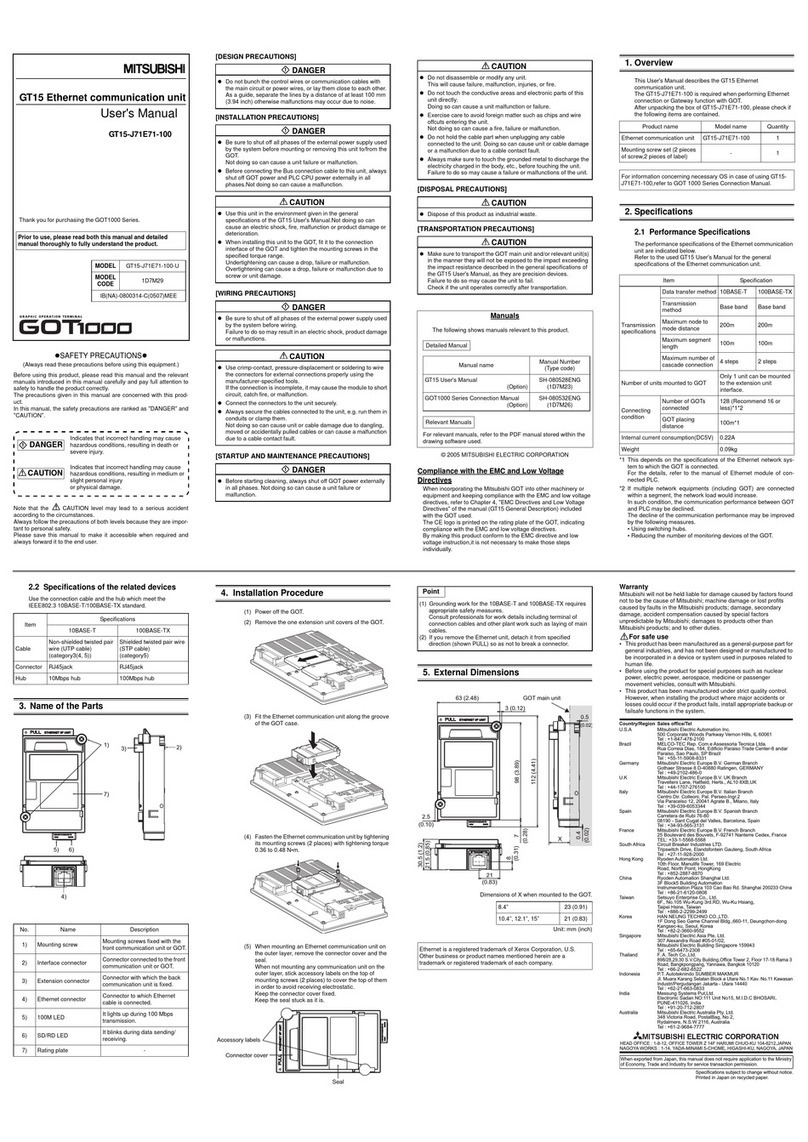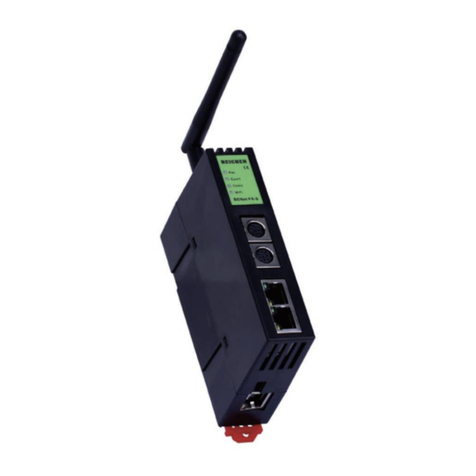3
Specifications
AJ71E71N-B5
A1SJ71E71N-B5 AJ71E71N-B2
A1SJ71E71N-B2
Item
10BASE5 10BASE2
Data transmission
speed 10 Mbps
Communication mode Half-duplex
Transmission method Base band
Maximum distance
between nodes 2500 m (8202.10 ft.) 925 m (3034.77 ft.)
Maximum segment
length 500 m (1640.42 ft.) 185 m (606.96 ft.)
Maximum number of
nodes/connection 100 nodes per segment 30 nodes per segment
Transmission
specifications
Minimum node interval 2.5 m (8.20 ft.) 0.5 m (1.64 ft.)
Number of allowable
simultaneously open
connectors 8 connections
Fixed buffer 1 k word ×8
Transmission
data storage
memory Random access buffer 3 k word ×2
Number of remote nodes that can be
communicated in a single initial
processing No restrictions
Number of occupied I/O points 32 points/1 slot (I/O assignments: special 32 points)
5 V DC internal current consumption AJ71E71N-B5 : 0.55A
A1SJ71E71N-B5 : 0.57A AJ71E71N-B2 : 0.67A
A1SJ71E71N-B2 : 0.66A
Connector D-sub connector
(Male 15-pin) BCN connector
Connection cable AUI cable
(Twisted pair cable) Coaxial cable
(RG58A/U, RG58C/U)
12 V DC external power supply
capacity (for transceiver) (2) —
External dimensions
AJ71E71N-B5, AJ71E71N-B2:
250 (9.84) (H) ×37.5 (1.48) (W) ×106 (4.17) (D) [mm (in.)]
A1SJ71E71N-B5, A1SJ71E71N-B2:
130 (5.12) (H) ×34.5 (1.36) (W) ×94 (3.70) (D) [mm (in.)]
yAll do not include the protruded section on the front
surface.
Waight
AJ71E71N-B5:
0.33 kg (0.73Ib.)
A1SJ71E71N-B5:
0.19 kg (0.42Ib.)
AJ71E71N-B2:
0.35 kg (0.77Ib.)
A1SJ71E71N-B2:
0.20 kg (0.44Ib.)
1 Length between hub and node.
2 It is required to use the one that satisfies the specifications of the transceiver and the
AUI cable. Also, for the AJ71E71N-B5, the voltage drop (Max. 0.8V) must be taken into
account.































